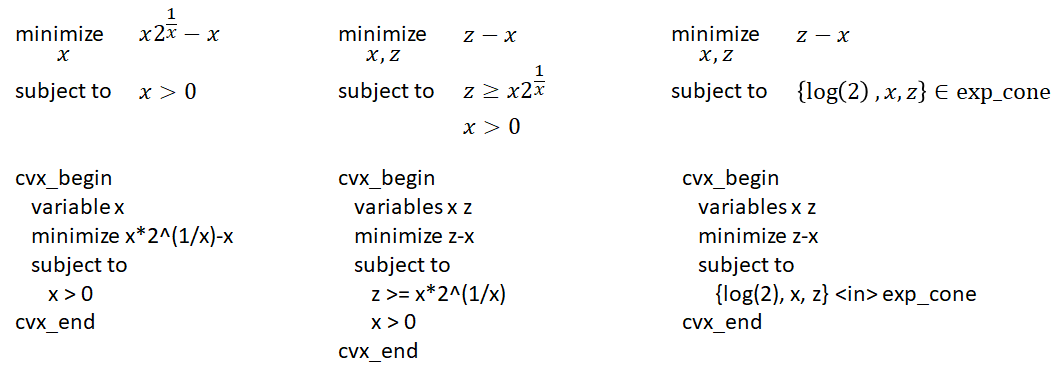Danny_Kim
(Do-Yup Kim)
1
In many answers, e.g., How to express “x*(2^(1/x)-1)” in CVX
, exponential(1) is used.
What is the difference between exponential and exp_cone?
I have tried to find exponential in CVX manual, but I cannot find it.
There are only exp_cone, defined as

I think to minimize x*(2^{1/x}-1), I have to use the right-most code as follows.
However, in How to express “x*(2^(1/x)-1)” in CVX
, Mark_L_Stone recommended to use the following code: {1,x,z} == exponential(1)
Please let me know what the difference is between exponential and exp_cone?
Also, why he recommended to use == instead of <in>?
Thank you.
The CVX Users’ Guide erroneously shows exp_cone. The actual implemented syntax uses exponential, as used in my answers.
I don’t believe
<in> exp_cone
works, because CVX does not recognize <in>, at last when I just tried it in CVX 2.2
1 Like
Danny_Kim
(Do-Yup Kim)
3
Here, does == imply “in”? That is, is the phrase {1,x,z} == exponential(1) representing that a tuple (1,x,z) is in a set exp_cone?
The syntax {1,x,z} == exponential(1) works. i don’t know whether any other syntax works.
I didn’t design or develop CVX. I’m just telling you what works. I suggest you use that.
1 Like

